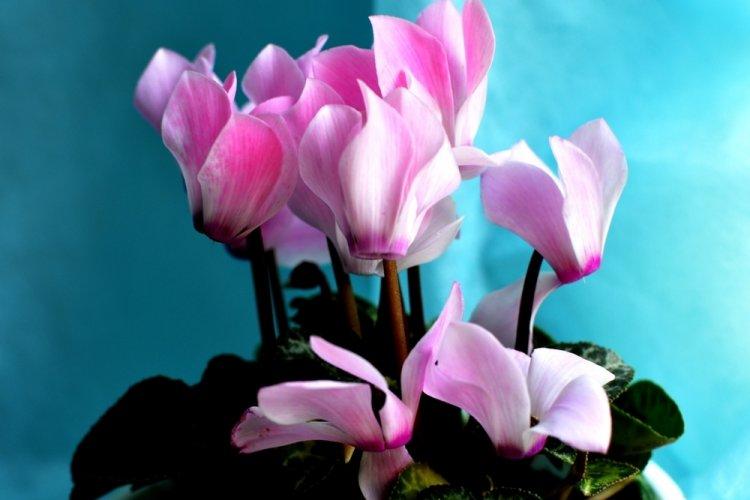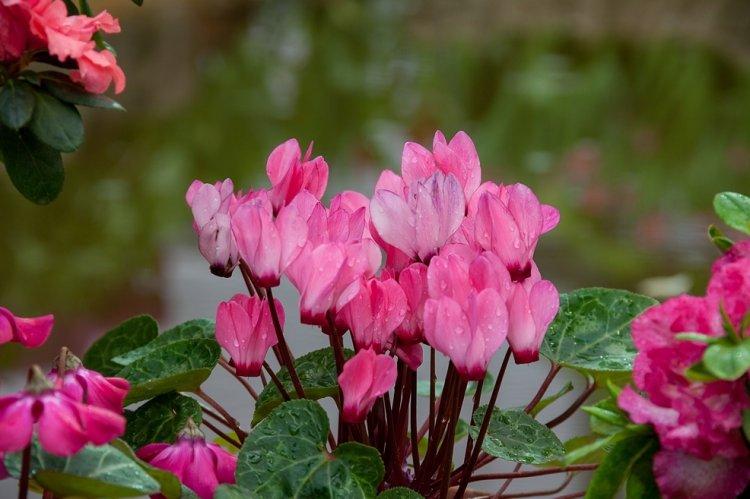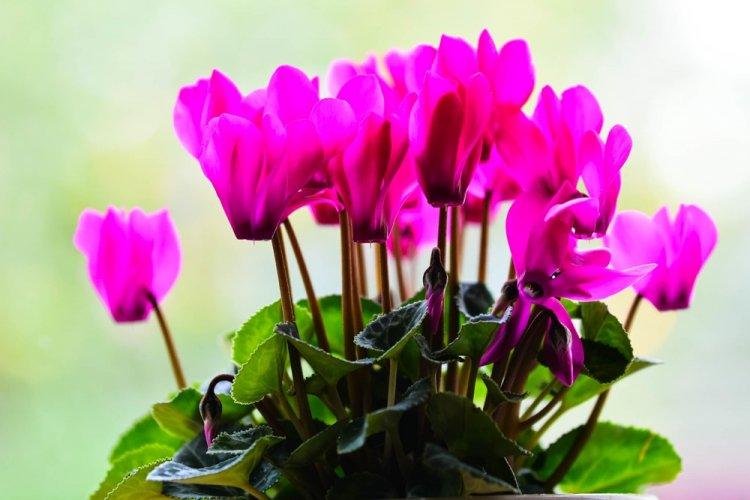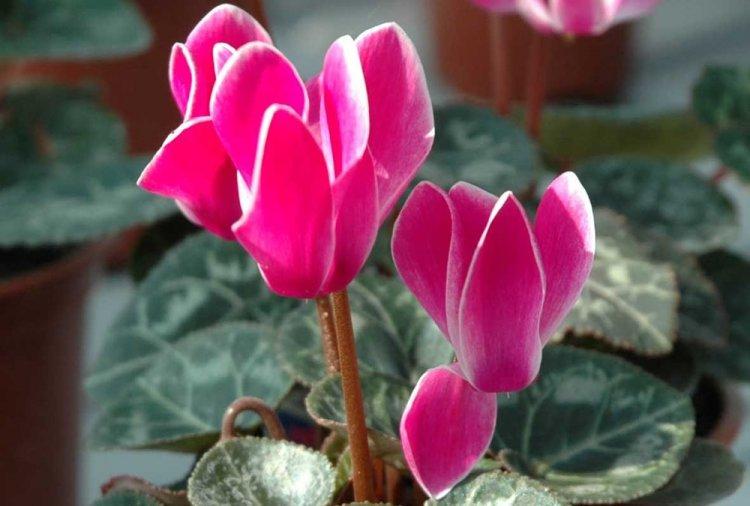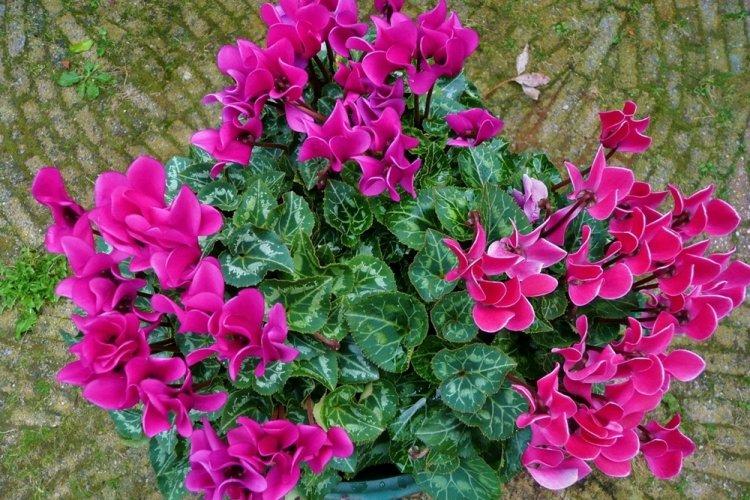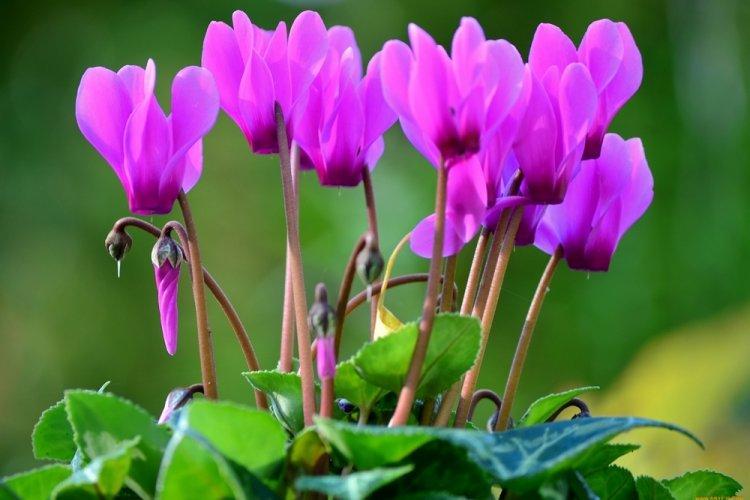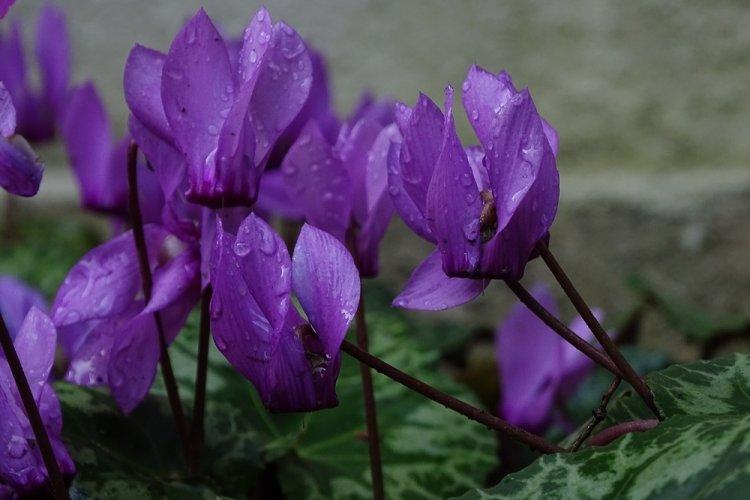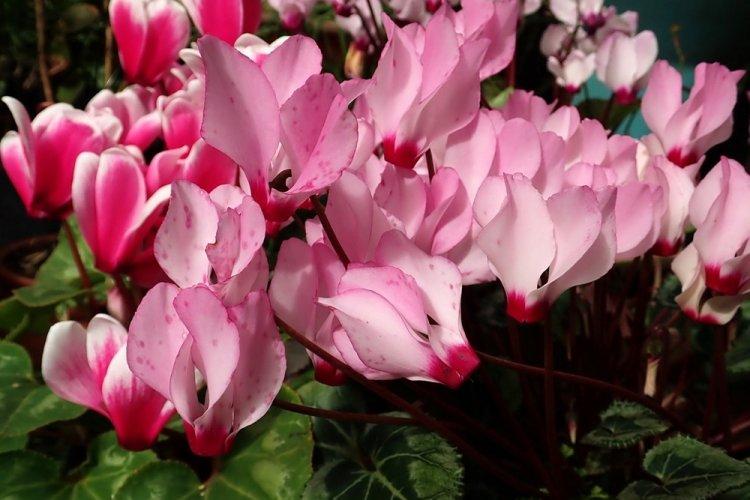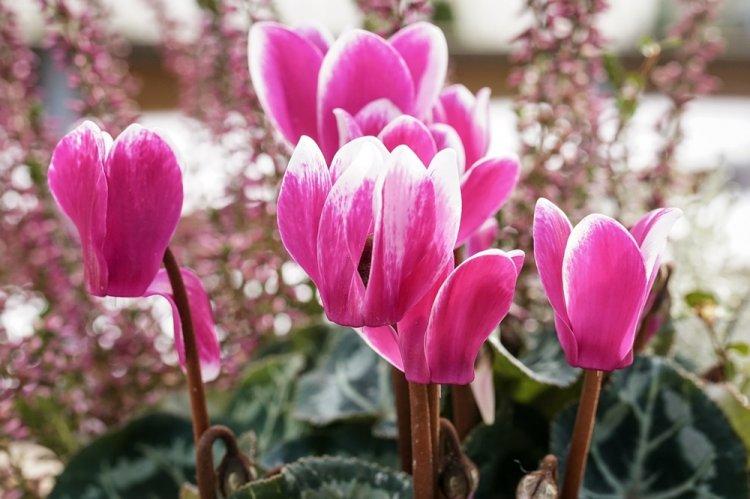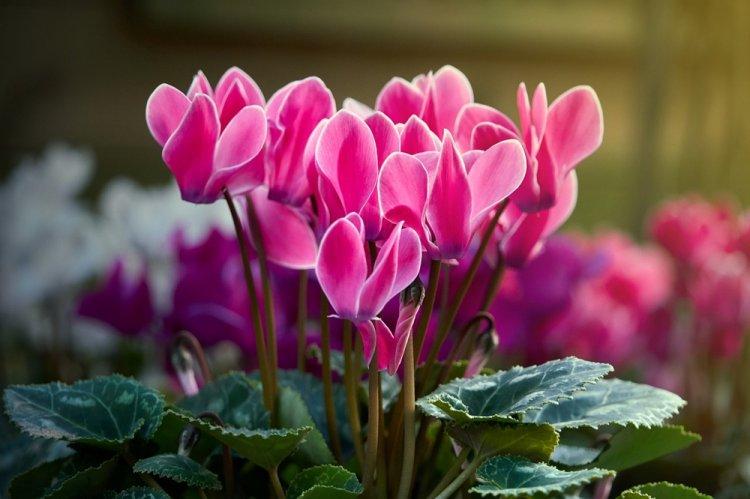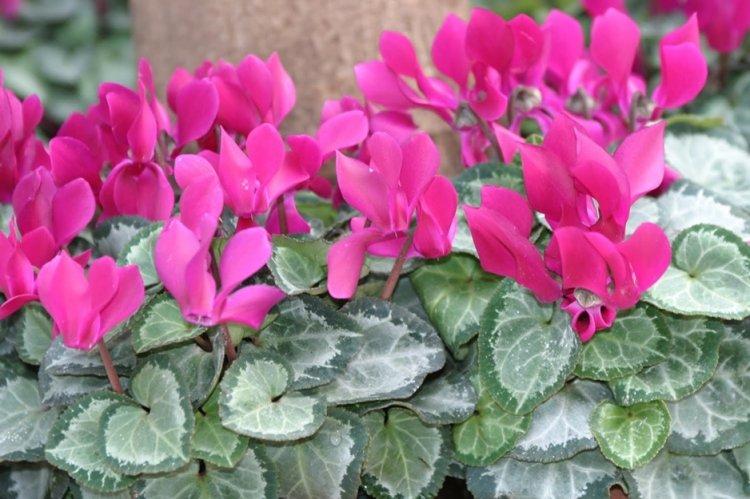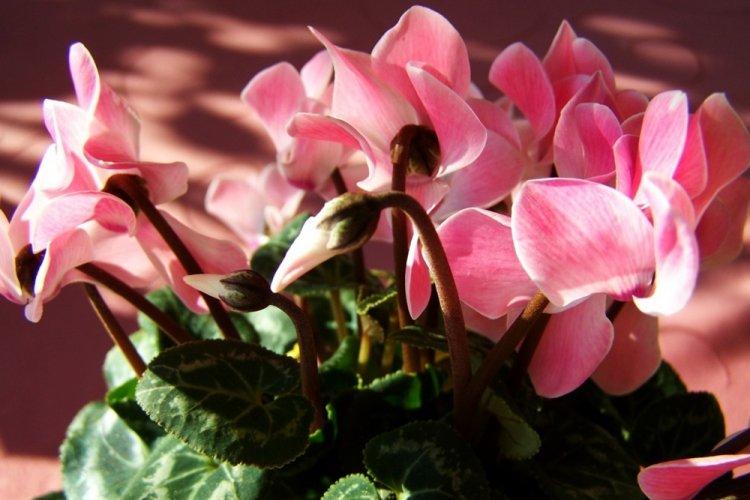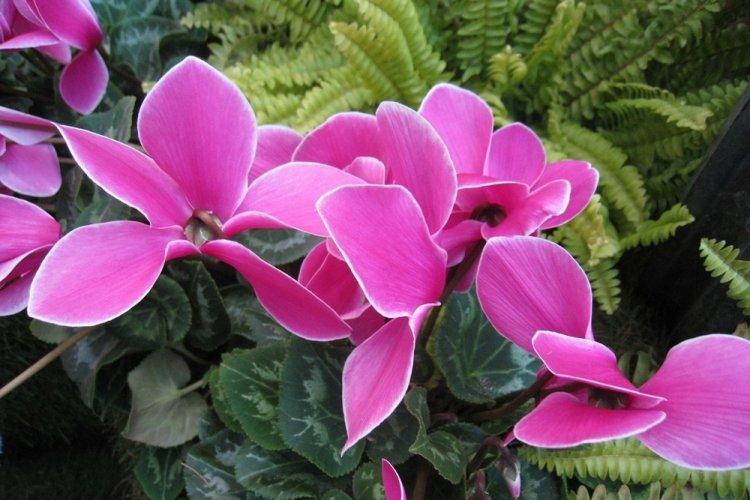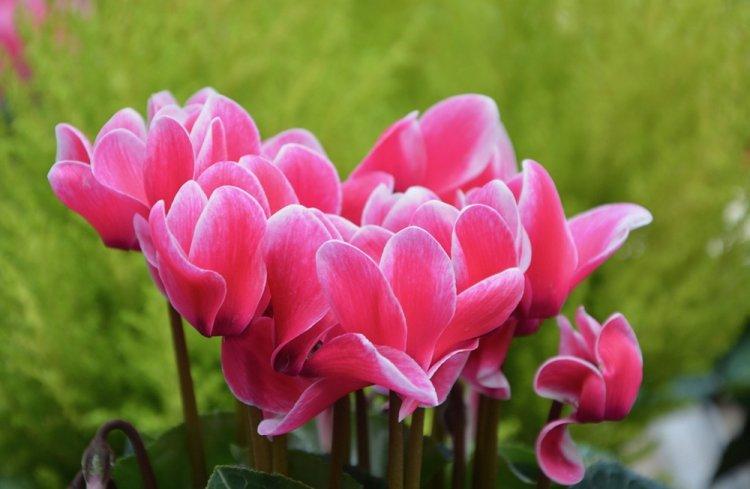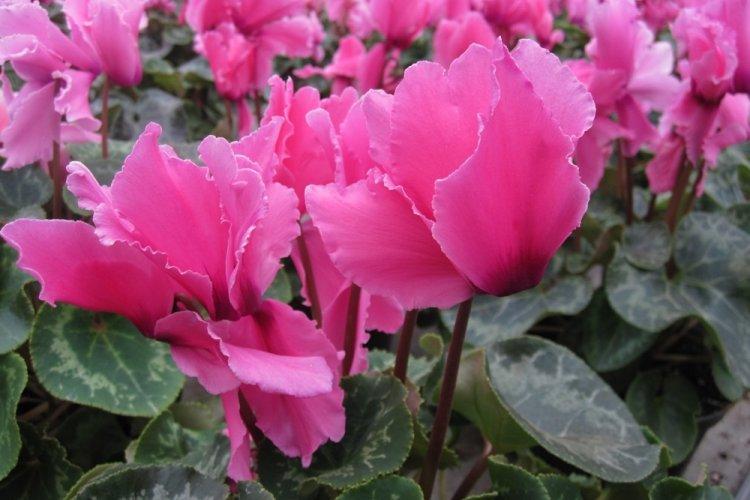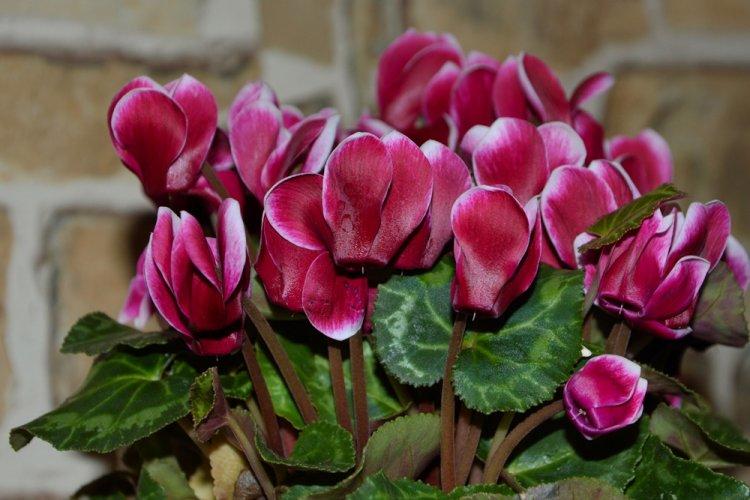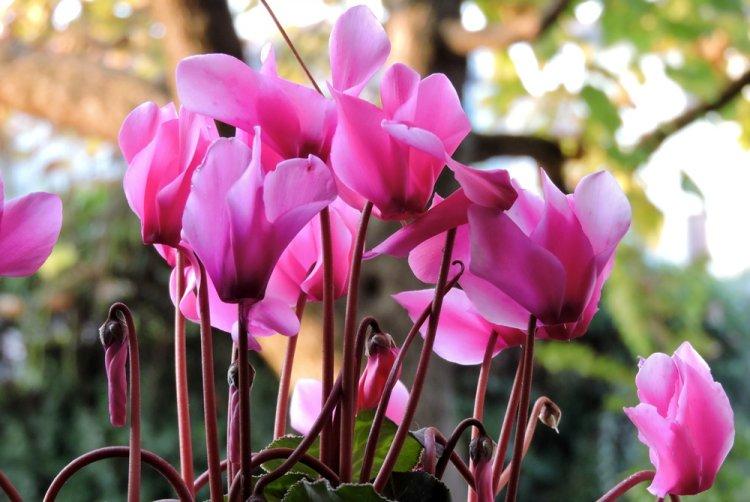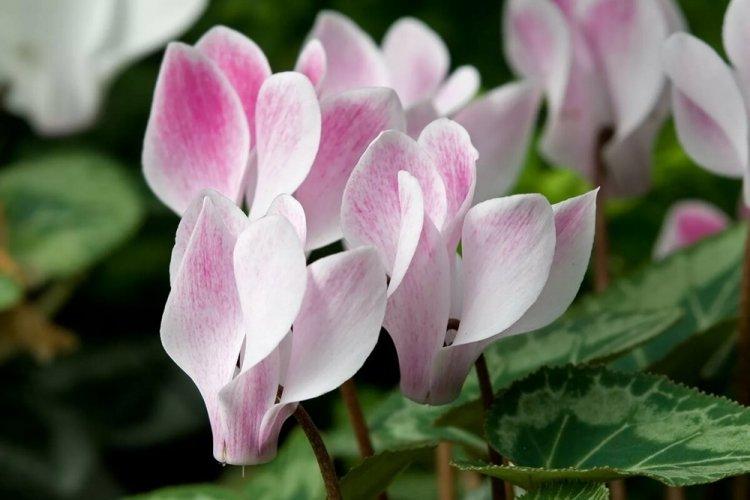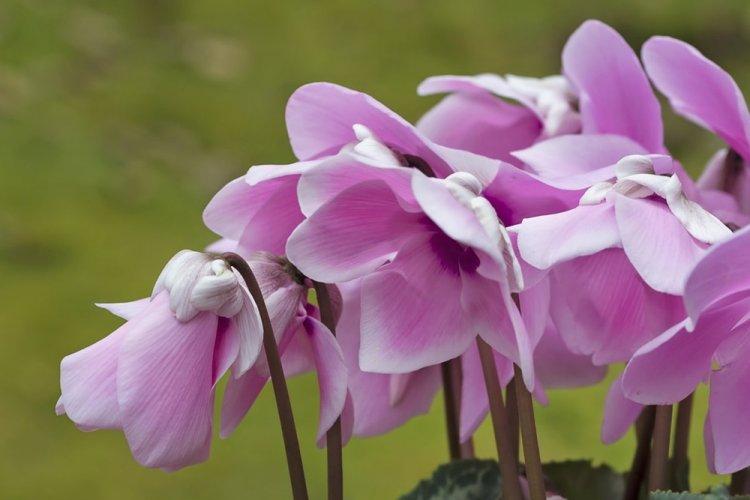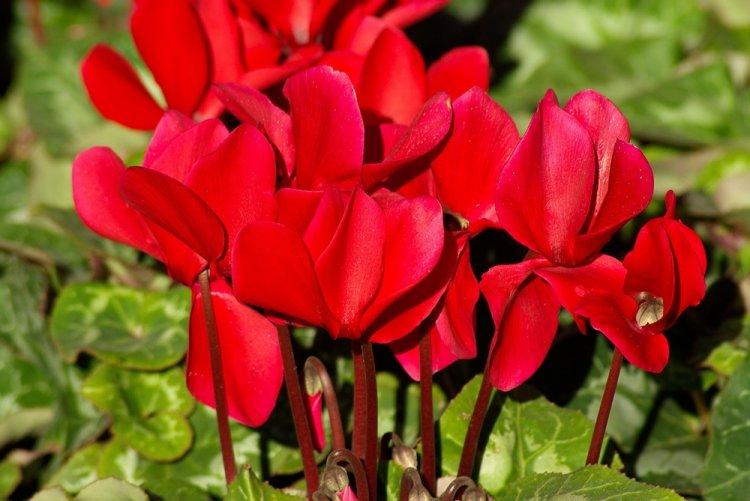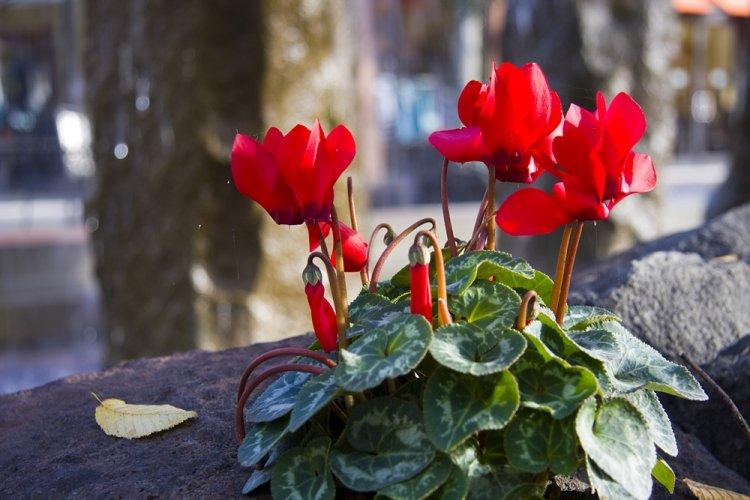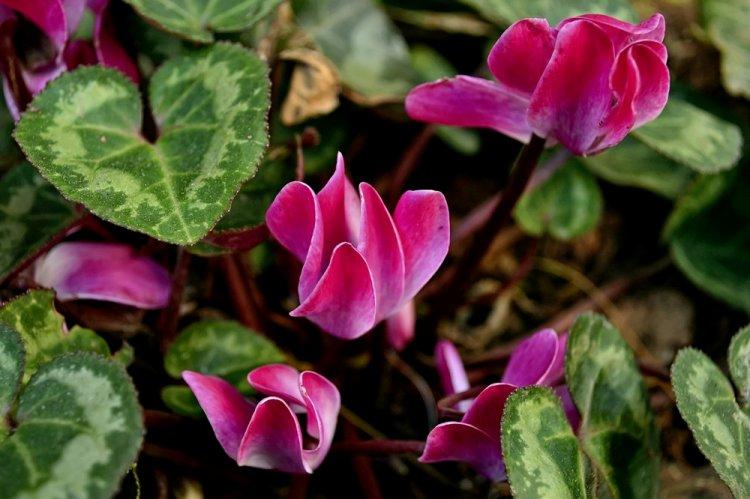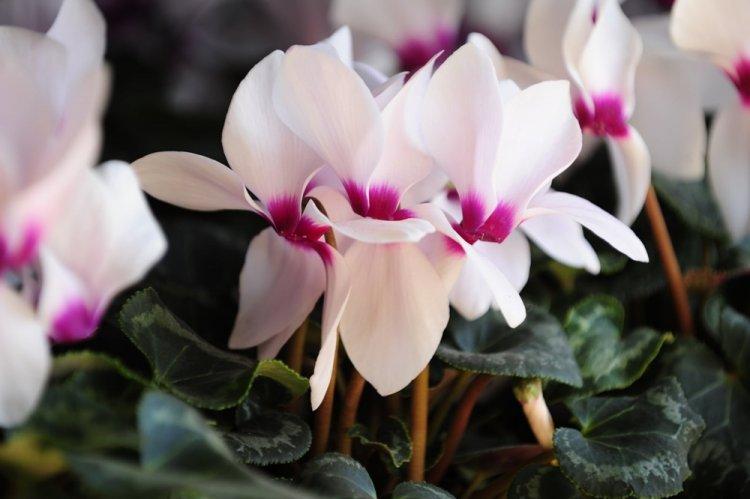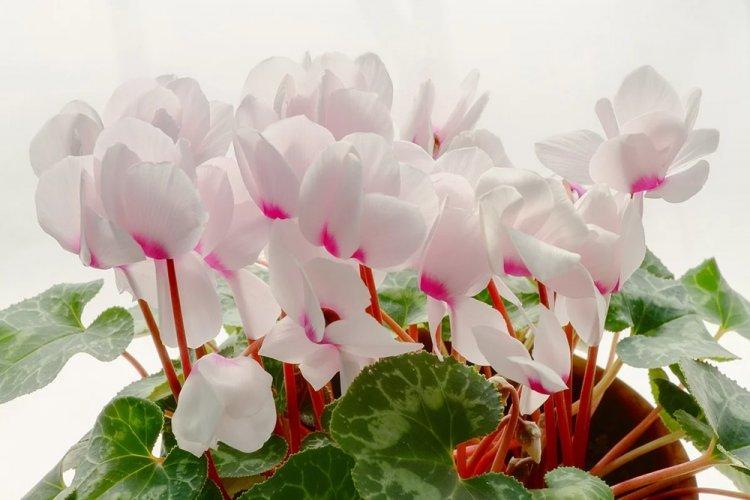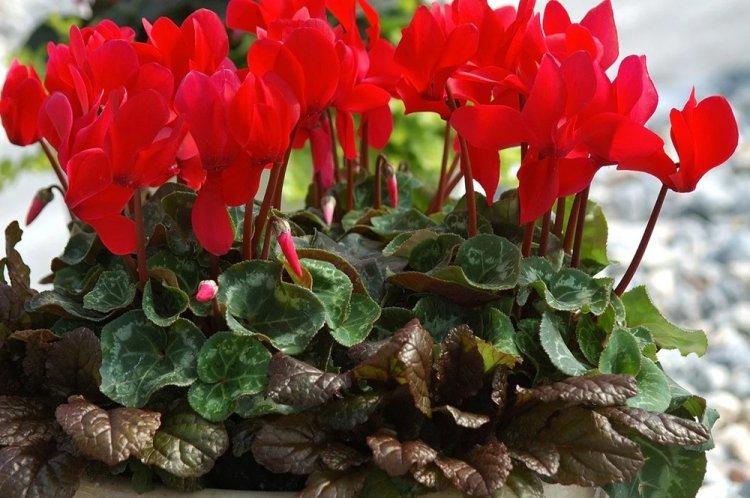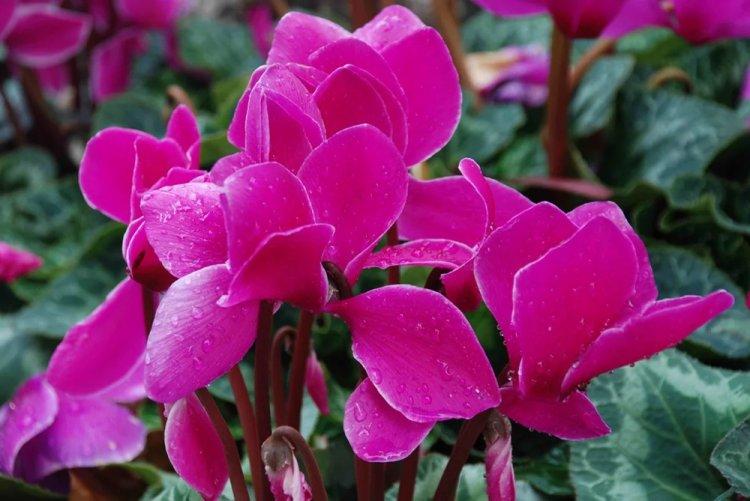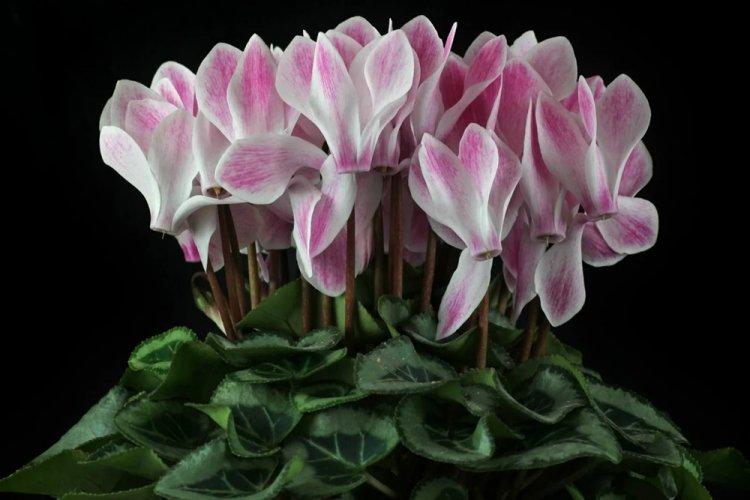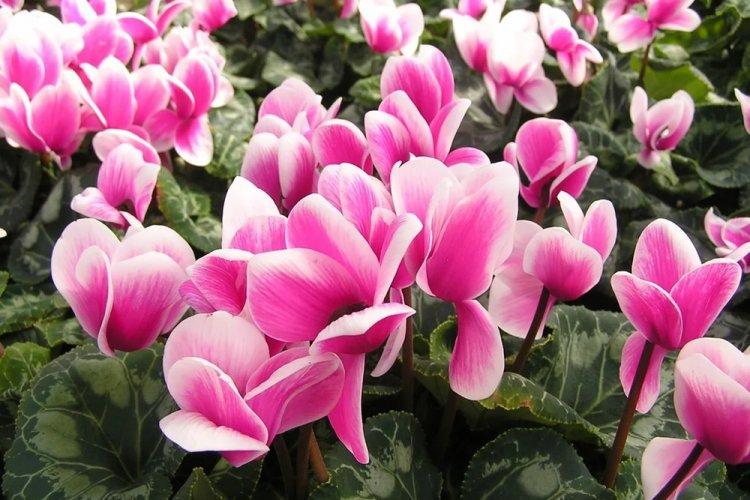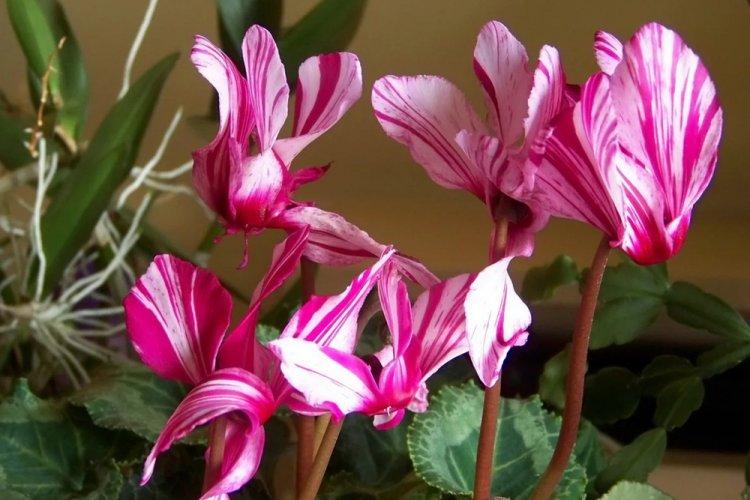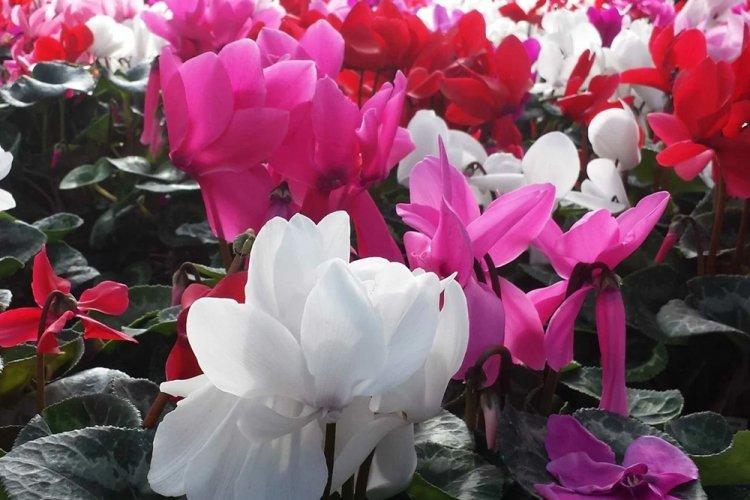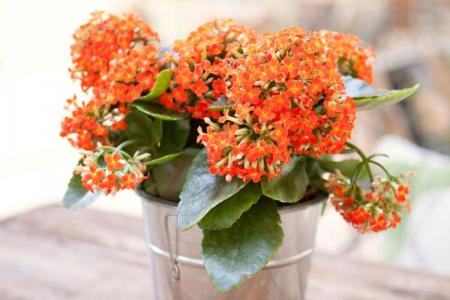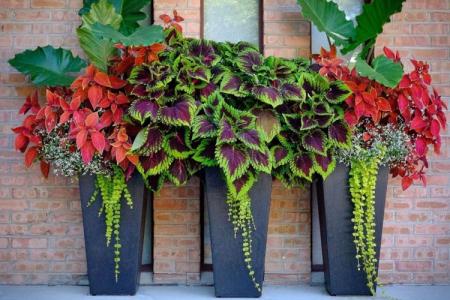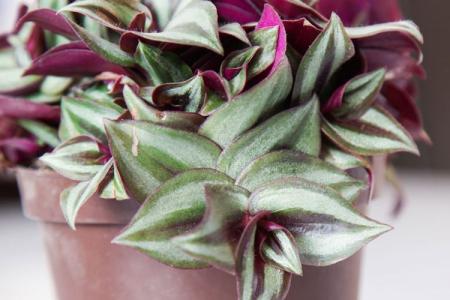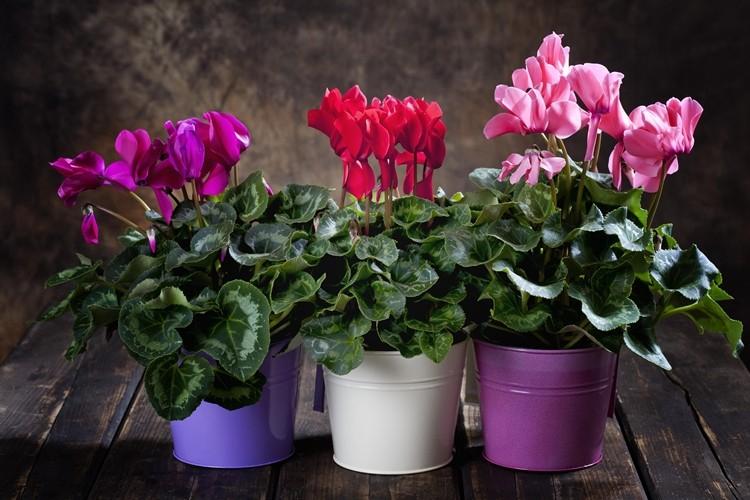
At first glance, cyclamen can be confused with an ordinary home violet. But it is enough to take a closer look to notice the differences in the bizarre shape and delicate texture of the petals. The sunny flower gives joy, smiles and dilutes the gray everyday life with colors even in the coldest and gloomiest winter. Let's take a closer look!
general information
In nature, cyclamen is common on the Mediterranean coast, in Spain, Iran and some regions of Africa. Its main feature is the pointed petals curved backwards, which at first glance resemble a fluttering flock of butterflies. Moreover, the cyclamen can bloom for several months or even longer, depending on the conditions and variety.
The leaves resemble small silky hearts on a long stalk. By themselves, they are also very decorative, with a silvery grayish pattern. Hybrid varieties look interesting, which differ in shades and patterns.
In its natural environment, cyclamen is a herbaceous perennial, therefore, at home, it lives about the same. The rhizome is thick and tuberous to store more nutrients for long flowering. The active phase lasts in spring or winter, and one small flowerpot will delight you up to 15 years.
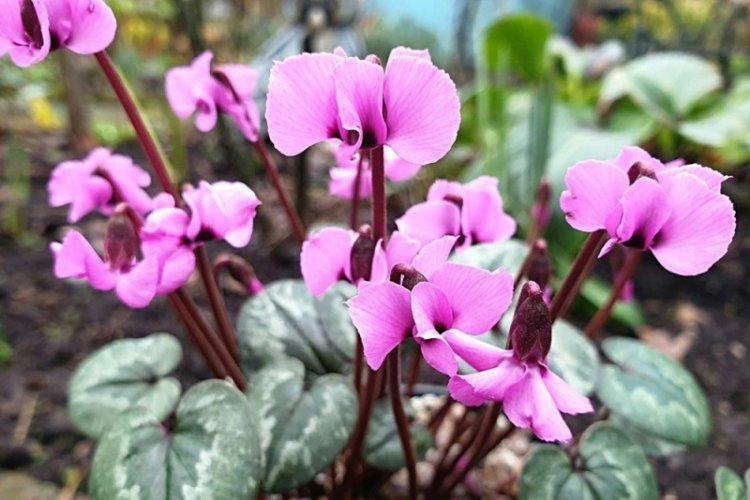
Types of cyclamen
Cyclamen is also called alpine violet, and for good reason - they really look alike. The color palette of textured curved petals is especially good - from snow-white to burgundy and purple. And most of all among the varieties - all shades of pink.
European cyclamen
As the name suggests, the European cyclamen is especially common in Europe, and in particular in Central. It is an evergreen herb with large and slightly toothed leaves. Their reverse side shines purple - to match the same colors.
The European cyclamen has beautiful and tall peduncles and unusual slightly spiral petals. There are varieties with burgundy petals, for the unusual shade of which they were called "blushing". Another feature is an expressive and rather strong smell.
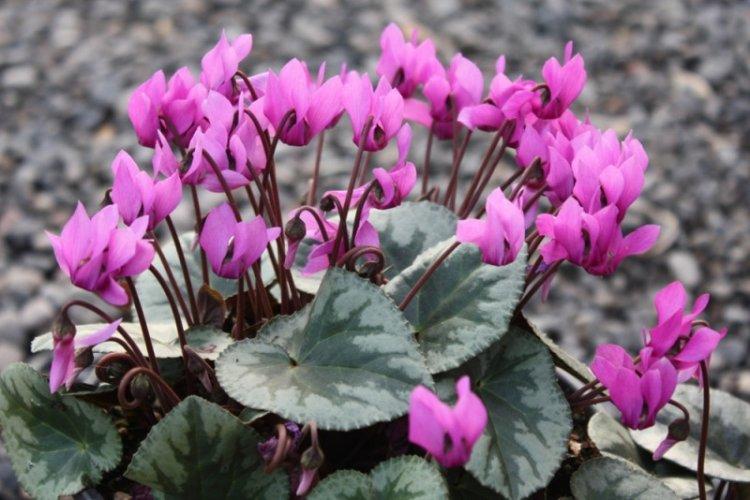
Persian cyclamen
This is one of the most common varieties both in our latitudes and, in principle, around the world. Even in the wild, it tolerates moderately cool winters well and can even bloom. In ancient times, almost all ills were treated with them - from a cold to rheumatism and snake bites.
Saturated dark green leaves are covered with a whitish pattern, reminiscent of patterns on natural marble. Flowers can be of different shades, from white to purple, red and pink. A lot of decorative hybrids of different colors and with an even longer flowering period have been bred from this variety.
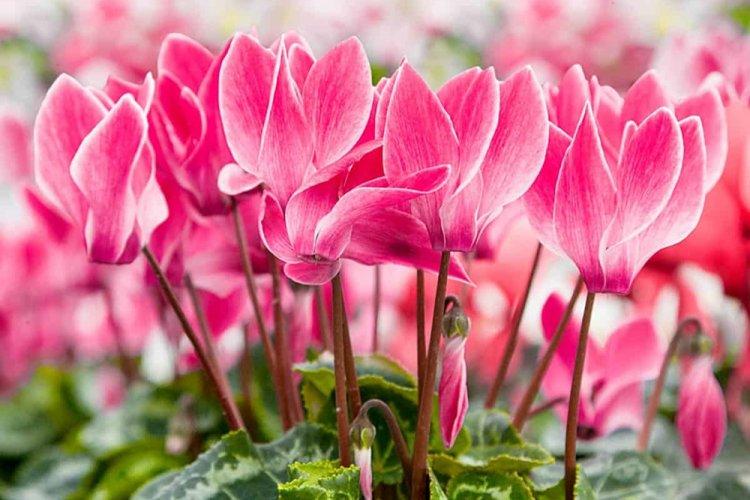
Alpine cyclamen
This species is interesting primarily for its history, because at different times the curiosity was considered to have disappeared and renewed. Only in the early 2000s, as many as three expeditions were sent to study an unusual variety. They managed to prove that the alpine cyclamen still remained in its natural habitat.
Alpine differs from other species in almost everything: more oval grayish leaves, honey aroma and unusual petals. Flowers do not grow upwards, but like bells - at an angle to the peduncle. At the base of each petal, there are small but distinctive purple markings.
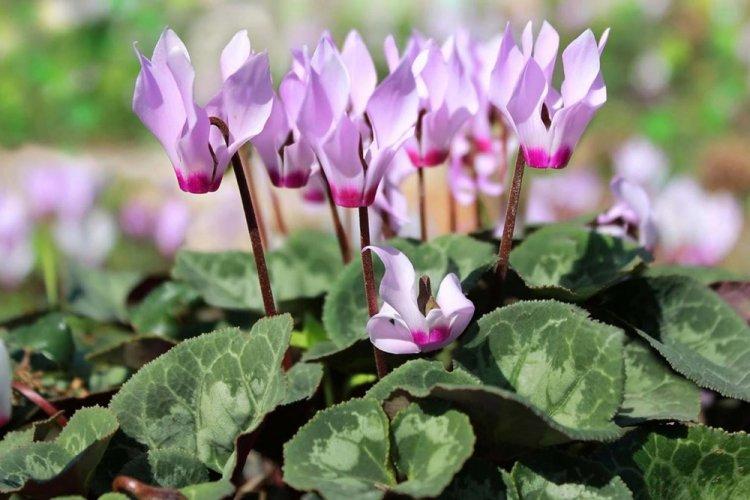
Ivy cyclamen
Ivy or Neapolitan cyclamen got its name for the characteristic shape and color of foliage. It came to us from the Mediterranean coast, but at the same time it is surprisingly resistant to frost. In southern European countries, it is even planted in open ground in park beds.
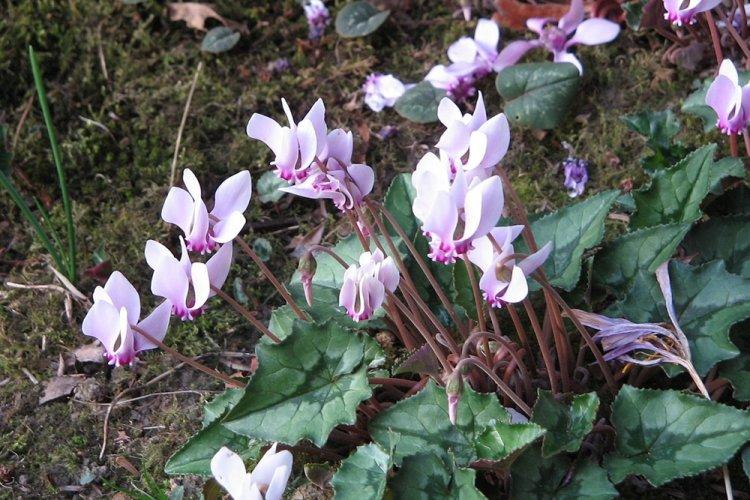
African cyclamen
An unusual variety is popular among flower growers due to the bizarre shape of the petals. In its natural environment, the African cyclamen hides among large shrubs and is completely inconspicuous.And completely in vain - its delicate rose petals are very graceful and elegant.
An interesting feature of the species is large leaf plates up to 15 cm in length with dark and silver patterns and a mottled edge. African cyclamen does not tolerate cold, therefore, requires shelter for the winter. Remember that its juice can be toxic to pets.
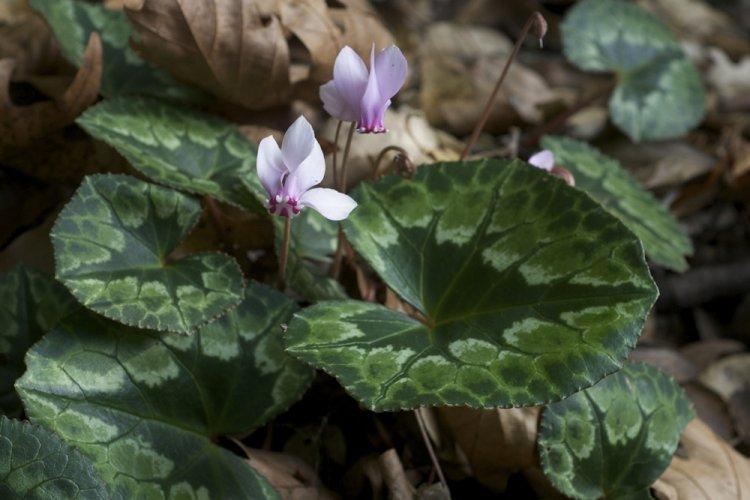
Cypriot cyclamen
For a long time, the Cypriot cyclamen was found only in the Cypriot mountains at an altitude of 1000-1100 meters. He prefers rocky soil and hides from the sun in the shade of tall shrubs and trees. Elongated whitish petals with purple or purple markings at the base look very interesting.
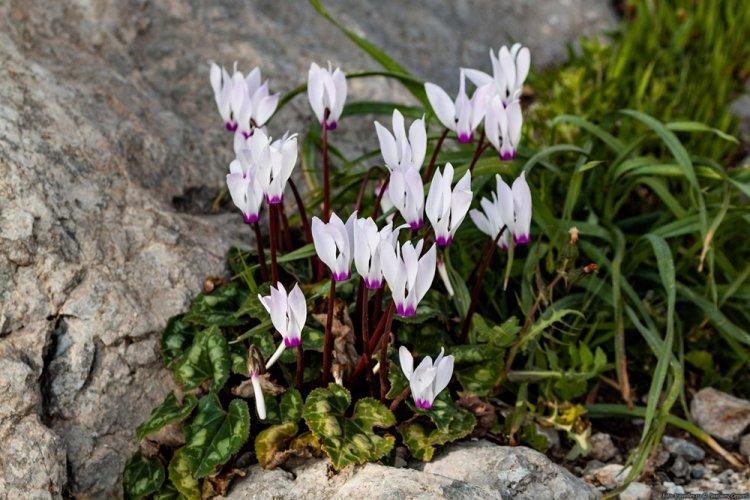
Greek cyclamen
The closest relative of the Cypriot cyclamen from the same latitudes is Greek. It also grows in Turkey and on the islands of Crete and Rhodes at an altitude of up to 1200 meters. Its interesting feature is the leaves that are very diverse in shape and color: from pale almost pastel oval to dark saturated heart-shaped with light patterns.
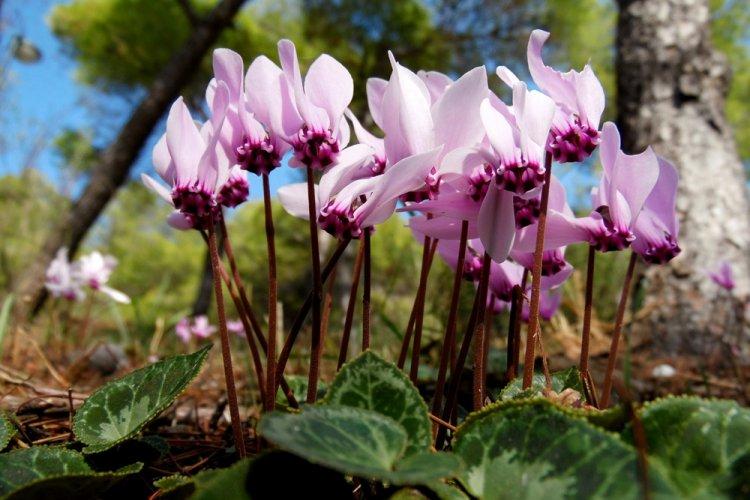
Colchis cyclamen
This is a Caucasian variety, which is also called Abkhazian or Pontic. Due to the fact that it is often cut for bouquets and medicines, in nature it has long been listed in the Red Book. A remarkable feature of this species is that leaves and flowers appear and develop at the same time.
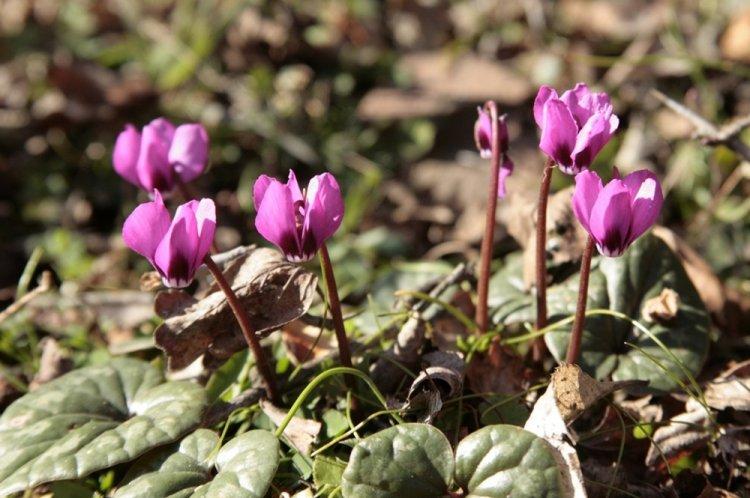
Cyclamen care
There is an opinion that cyclamen is very capricious and demanding to care for. But in reality - not everything is so scary and the needs of a Mediterranean guest are very easy to satisfy. Simply, unlike its tropical counterparts, it does not require heat and sun, but coolness and peace!
Temperature
Cyclamen categorically does not tolerate high temperatures and quickly dries up and falls off. The normal mode for growth and flowering is in the range of 10 to 14 degrees. This is especially true for varieties that bloom in winter. But in the summer, when there is no flowering, they will calmly withstand +20.
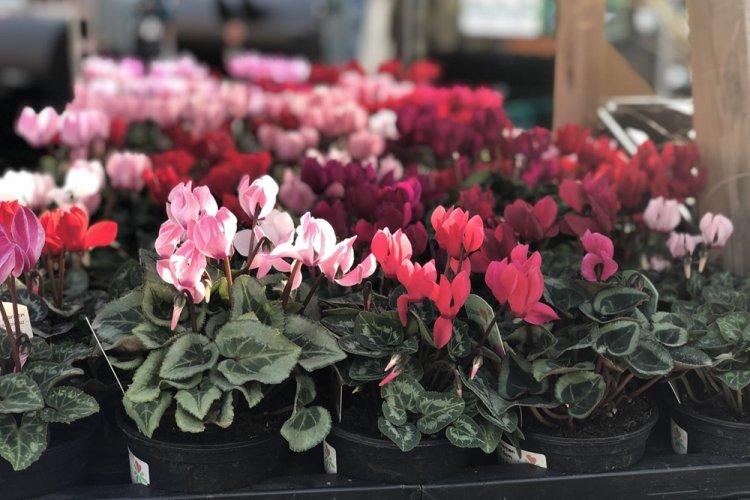
Lighting
Cyclamen prefers partial shade in everyday life, because direct sunlight will burn delicate leaves. Choose an east or west window sill, or move the flowerpot away from the window on the south side. But in the north, the sun may not be enough.
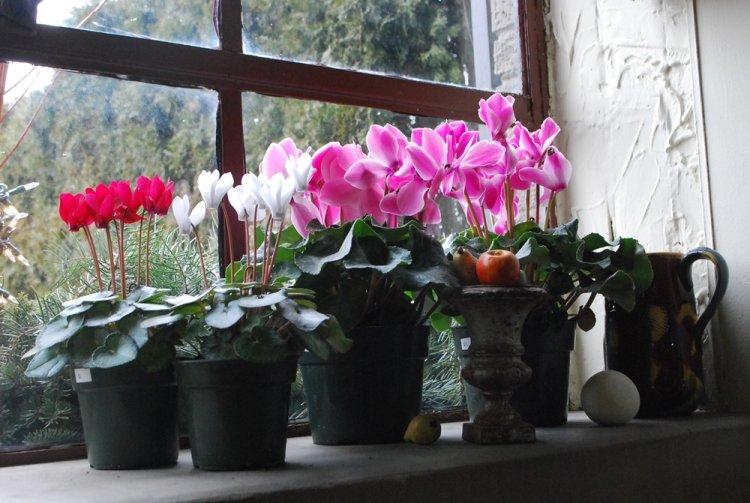
Watering
Cyclamen is watered only with settled water, which has stood for at least a day. It should be soft and 1-2 degrees cooler than the temperature in the room. During flowering, water the flowerpot more often so that the substrate does not dry out, but also so that the water does not stagnate.
For cyclamen, watering is well suited not from above, but through a pan with water. So moisture will not get on the stem, leaves and tuber, which means there is less likelihood of rotting. But do not let the water in the pan to stagnate for a long time and drain the excess after 2-3 hours.
If the room has low humidity, occasionally spray the leaves with well-settled water from a spray bottle. After the buds are set, fill the pallet with wet expanded clay, pebbles or peat. When the cyclamen fades, reduce watering until the foliage dries up and the tuber is exposed - this is a dormant period.
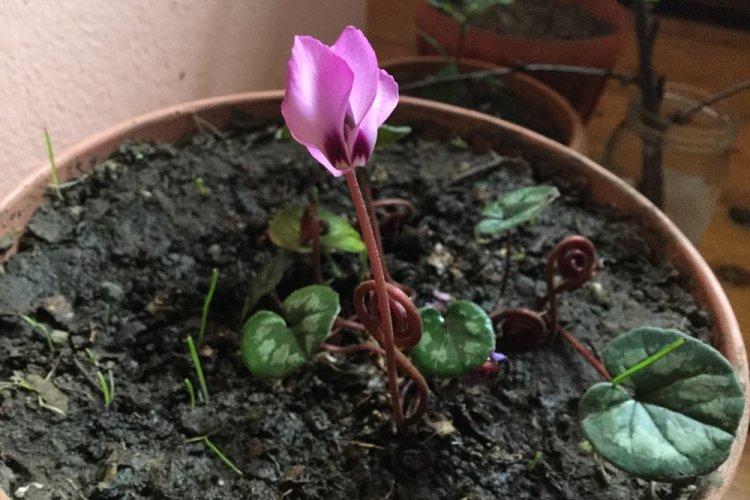
Dormant period
Cyclamen, which has faded and dried, must be transferred to a cool and well-ventilated place without the sun. For example, on the balcony, where it is enough to occasionally moisten it a little. At the end of summer, transfer the flowerpot to a bright, warm room and begin to gradually increase the intensity of watering.
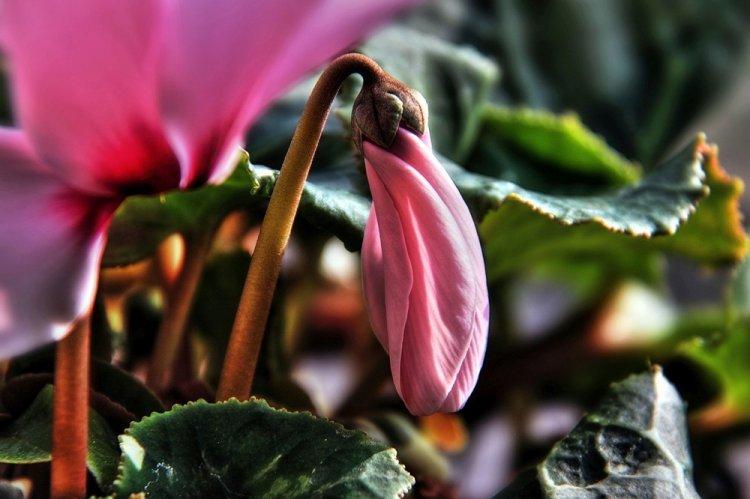
Fertilizers and feeding
It is necessary to feed cyclamen only during the period of active growth, when the leaves are just hatching. Organic and mineral fertilizers will do, but don't overdo it with nitrogen. It can provoke rotting of the root system.
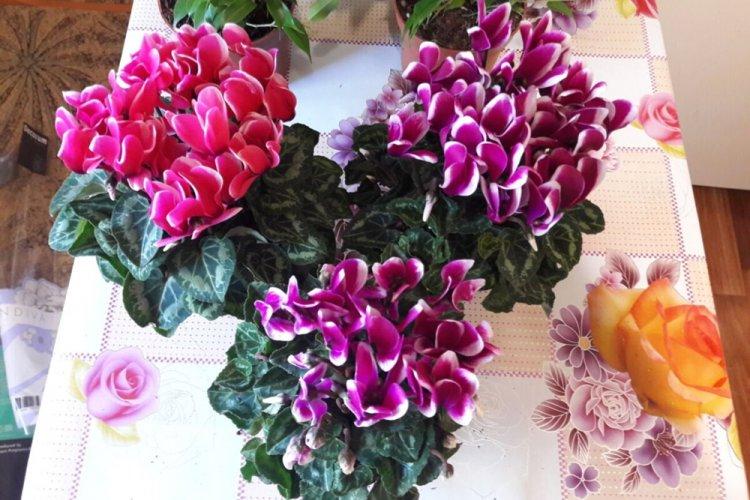
Transplant and reproduction
Cyclamen should be replanted every year in late summer or early fall. At this time, the tuber comes out of dormancy and the first leaves are tied. When transplanting, cut off all rotten and damaged roots so as not to injure a healthy one. The tuber should be at least a third higher than the ground level for the flower to be thick and lush.
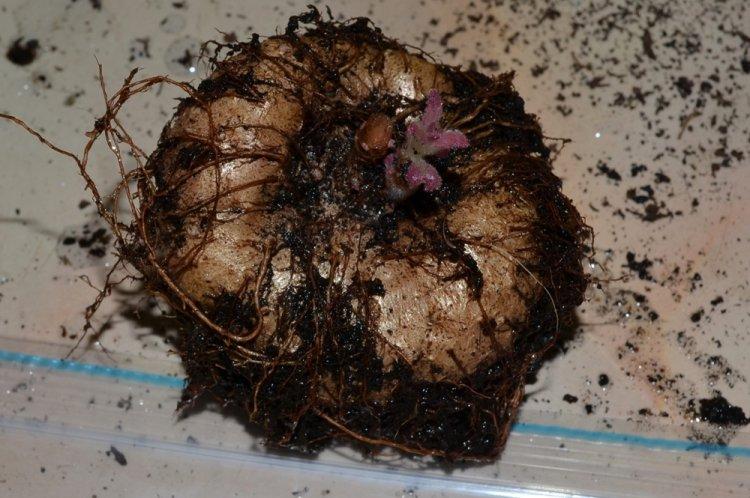
Pest and disease control
The color of the leaves and petioles of cyclamen most often changes due to improper water: if it is too hard and not sufficiently settled. Due to the heat and dryness, the leaves begin to dry and fly around. Cold, poor drainage and excess moisture provoke rot. In this case, it is necessary to urgently remove all damaged areas until the flower has died.
The most serious problem is the cyclamen mite, which will almost certainly destroy the flower. The first symptoms are deformation, curvature and reduction of leaves and peduncles. The second problem is the grape weevil, due to which the shoots become fragile and die off. Do not forget to regularly inspect the flowerpot, immediately change the soil and treat the seedlings with insecticides.
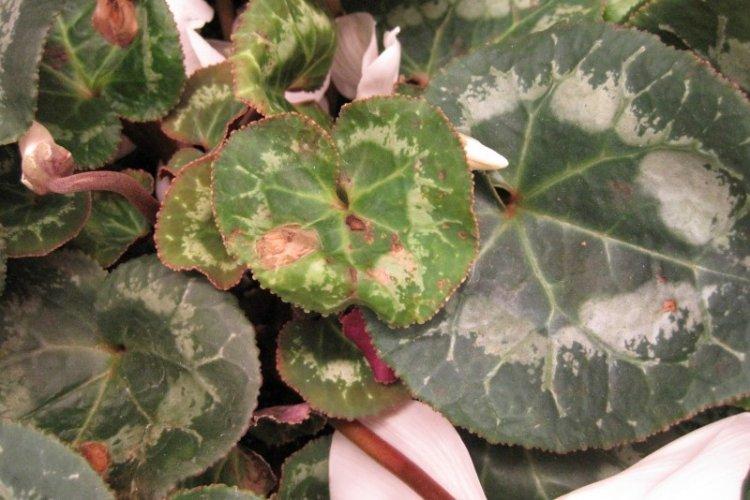
Cyclamen - photo
Any difficulties that arise with cyclamen are fully compensated for by its beauty and elegance. Just take a look at these photos!
